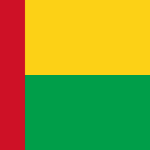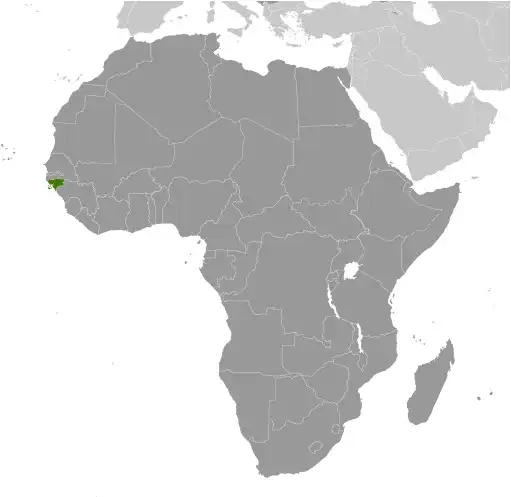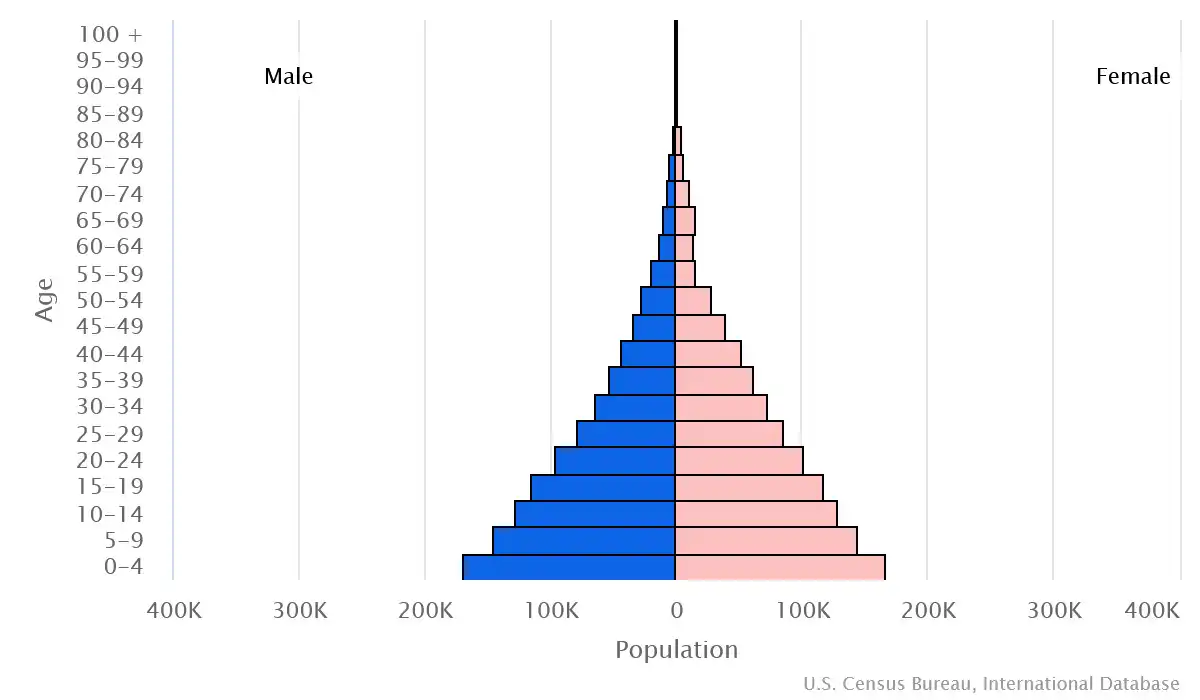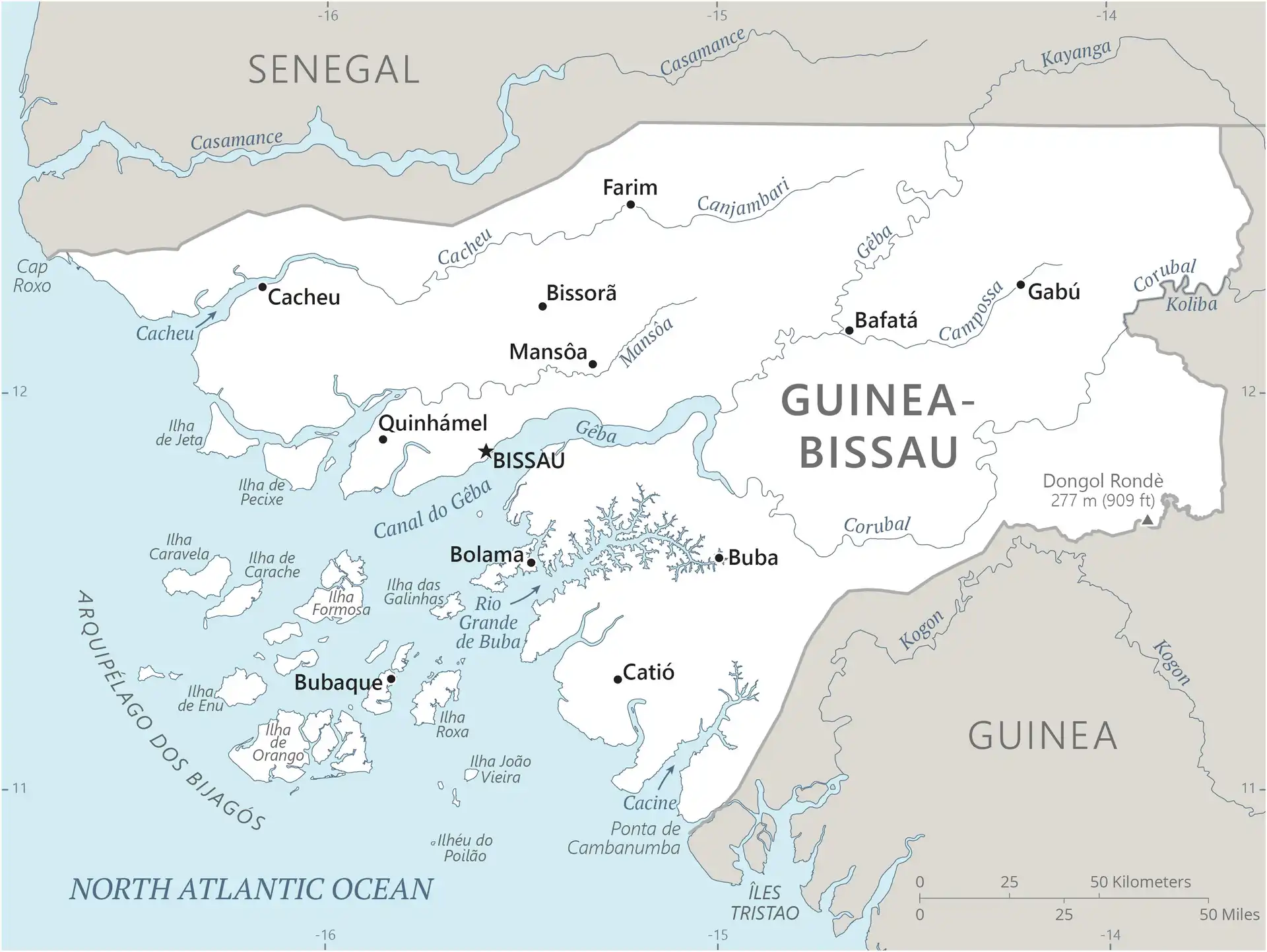
Guinea-Bissau
Country Data Dashboard

| Government type: | semi-presidential republic |
| Capital: | Bissau |
| Languages: | Portuguese-based Creole, Portuguese (official; largely used as a second or third language), Pular (a Fula language), Mandingo |
People & Society
Ethnicity (2015 est.)
Religion (2020 est.)
Age structure

Economy
Economic overview
extremely poor West African economy; ethnically diverse labor force; increasing government expenditures; slight inflation due to food supply disruptions; major cashew exporter; systemic banking instabilities and corruption; vulnerable to oil price shocks
Real GDP (purchasing power parity) in Billion $
Real GDP per capita in $
Exports & Imports in million $
Top 5 Import Partner in 2022 (79%)
Top 5 Import Commodities in 2022
- refined petroleum ⛽
- steel 🛠️
- rice 🍚
- flavored water 💧
- beer 🍺
Top 5 Export Partner in 2022 (79%)
Top 5 Export Commodities in 2022
- coconuts/Brazil nuts/cashews 🌰
- fish 🐟
- fish oil 🛢️
- palm oil 🛢️
- dried fruits 🍇
Geography
Map

Area
Natural resources
- fish 🐟
- timber 🌲
- phosphates ⛏️
- bauxite 🪨
- clay 🧱
- granite 🪨
- limestone 🪨
- unexploited deposits of petroleum 🛢️
Climate
tropical; generally hot and humid; monsoonal-type rainy season (June to November) with southwesterly winds; dry season (December to May) with northeasterly harmattan winds
Historical Background Information
For much of its history, Guinea-Bissau was under the control of the Mali Empire and the Kaabu Kingdom. In the 16th century, Portugal began establishing trading posts along Guinea-Bissau’s shoreline. Initially, the Portuguese were restricted to the coastline and islands. However, the slave and gold trades were lucrative to local African leaders, and the Portuguese were slowly able to expand their power and influence inland. Starting in the 18th century, the Mali Empire and Kingdom of Kaabu slowly disintegrated into smaller local entities. By the 19th century, Portugal had fully incorporated Guinea-Bissau into its empire.
Since gaining independence in 1974, Guinea-Bissau has experienced considerable political and military upheaval. In 1980, a military coup established General Joao Bernardo 'Nino' VIEIRA as president. VIEIRA's regime suppressed political opposition and purged political rivals. Several coup attempts through the 1980s and early 1990s failed to unseat him, but a military mutiny and civil war in 1999 led to VIEIRA's ouster. In 2000, a transitional government turned over power to opposition leader Kumba YALA. In 2003, a bloodless military coup overthrew YALA and installed businessman Henrique ROSA as interim president. In 2005, VIEIRA was reelected, pledging to pursue economic development and national reconciliation; he was assassinated in 2009. Malam Bacai SANHA was then elected president, but he passed away in 2012 from a long-term illness. A military coup blocked the second round of the election to replace him, but after mediation from the Economic Community of Western African States, a civilian transitional government assumed power. In 2014, Jose Mario VAZ was elected president in a free and fair election, and in 2019, he became the first president in Guinea-Bissau’s history to complete a full term. Umaro Sissoco EMBALO was elected president in 2019, but he did not take office until 2020 because of a prolonged challenge to the election results.
